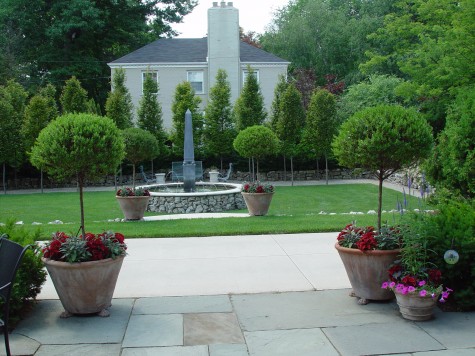
This Friday past I wrote some about a landscape renovation project I did in 2002. I planted a slew of carpinus fastigiata grown in 25 gallon pots for the bosquet pictured above. The need for so many trees suggested trees of a reasonable price; my clients understood that small trees would take hold fast and grow. No plant decision is ever easy; big trees that are transplanted at worst fail, and at best, take years to feel at home, root, and move in. New landscapes are not hard to spot, even if large plant material is installed. Most newly planted plants have that distinctive look common to nursery grown plants. Growers have different goals than gardeners. But three years after the installation, these trees are starting to do what I knew they would, given time.
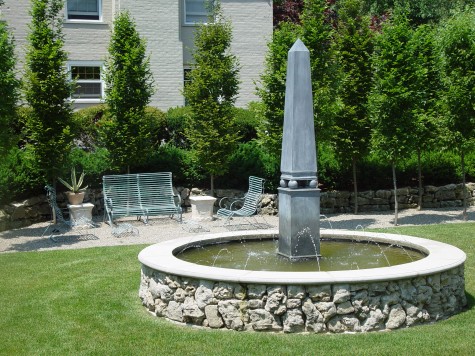
Growers pay plenty in taxes for the land they own. Their idea is to plant as many plants as they can, per square foot. A grower needs to plant closely, and harvest often. So trees and shrubs are grown as closely together as good horticulture will allow. These carpinus did have that skinny, grown in a row, look. Planting them too close together would have made for problems later, so there were some years my clients had to suffer the gaps in their screening.
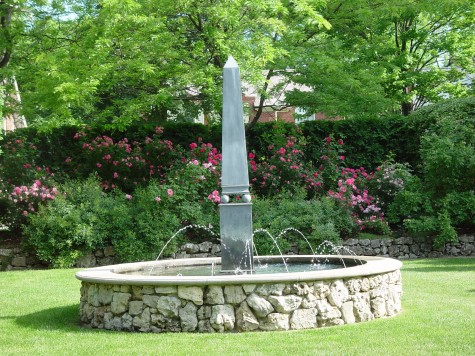
Perennials, including roses, are more quickly adaptable. A two gallon perennial is a big plant which will take hold in one season, given a serious gardener. What you see here has everything to do with a gardener in charge. Though relatively easy to establish, perennials are plenty of work-deadheading, dividing and the like. They also have a short lifespan, relative to trees and shrubs-unless we are talking peonies and asparagus.
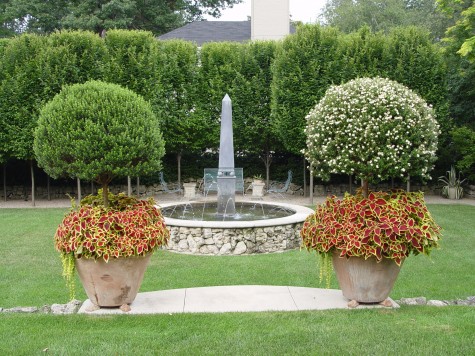
The small hornbeams took hold, rooted in, and grew. This photograph taken 5 years after the installation recorded a dramatic change; the view of the house next door is fading fast. The bosquet is now a shady place to sit.
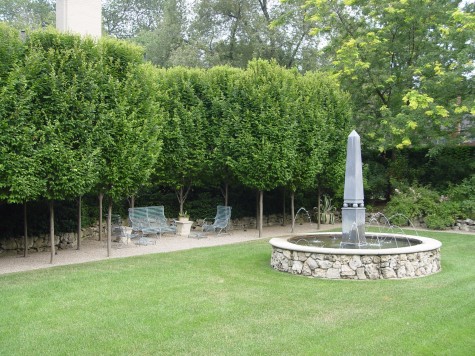
What once was dirt-what once was a spare diagram for a space, is growing vigorously. The day the installation was finished, these clients took ownership of the maintenance. It is a very good thing when a client picks up and carries on. It did take some time to work out the irrigation issues, and there is a big pruning job to be done every spring.
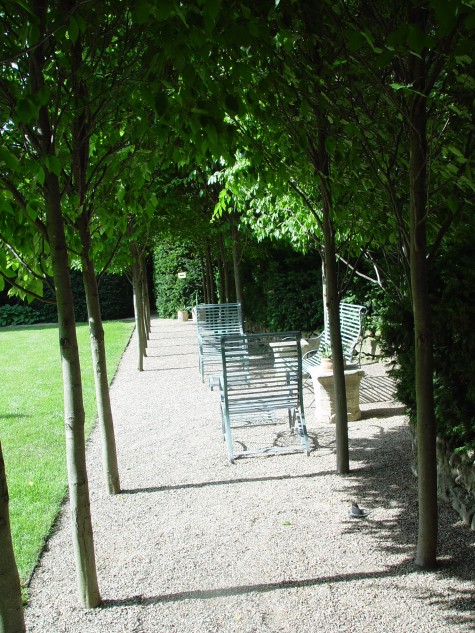
They have pruned the interior branches such that the trees provide a vaulted green ceiling. A suite of iron furniture is complimented by a pair of antique English capitals. The long view to a group of agaves in stone pots, and a birdhouse, is a good one. A garden needs time to establish a look like this.
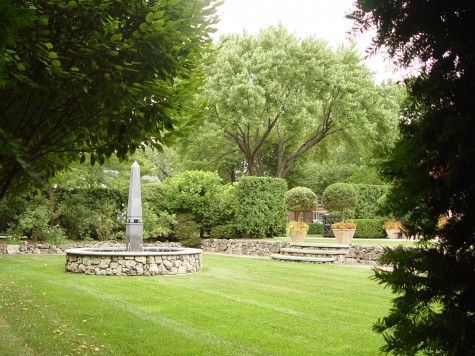
The landscape is beginning to look in proper proportion to the existing mature trees and yews on the property . Proper scale and proportion is tough to plan for, as it has to be imagined. With time, any mistakes is spacing or choice of plant material will become apparent. I see landscapes only 5 years old that are overplanted, and consequently overgrown. This landscape is just beginning to hit its stride.
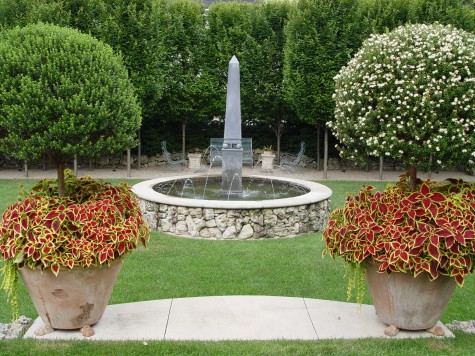
Even the topiary myrtles that go to the greenhouse for the winter have grown. Their trunks have become substantial. Making something grow is no small accomplishment. However, the patience to give a garden the time it needs is sometimes the best move you can make.
Deborah,
Another fabulous garden and post by you. It reminded me of the many parks in Paris, with the trees planted in the gravel. You talk about proper spacing, for the long term good. How far apart where these trees/rows planted? How often are they pruned? I too need to screen out a neighbours house. Five years is a short time in the garden, if I start now, by the time I move to my house full time, they will be hidden.
Dear Deborah, these columnar carpinus were planted 8 feet apart on center. If I were planting lindens, or any other broadheaded tree, I would plant 12 feet apart on center. It is amazing how little plants can look-and you blink, and they have grown like crazy. Plant some trees! Keep me posted about that, Deborah